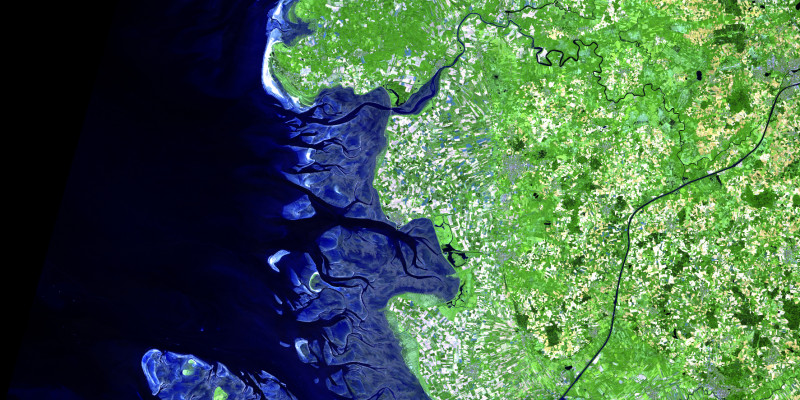Water type of the year 2019: the large North Sea estuary
An extreme habitat has only "moderate" status
 Click to enlarge
Click to enlargeSource: Copernicus Sentinel Daten [2018]
The estuaries of the Elbe, Ems and Weser rivers have changed dramatically in recent years due to the many different use requirements of industry, shipping, port operations, and flood prevention. In particular dykes and barrages erected for the purpose of land reclamation and storm flood protection mean fewer flooding and sedimentation areas. Inputs of nutrients and pollutants from agricultural land into the catchment areas of the Elbe, Ems and Weser are detrimental to water quality. The fishing industry and tourism also impact the condition of the estuaries. To draw attention to these developments the estuaries of the Elbe, Ems and Weser have been named Water Type of the Year 2019. The technical term for these funnel-shaped river outlets is 'North Sea estuary'. The three estuaries were in a near-natural state up until the end of the 19th century. Nowadays their ecological status – a consideration of the biodiversity of plants, animals and natural habitats in particular – is classified as 'moderate' to 'poor'.

